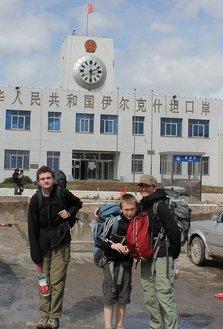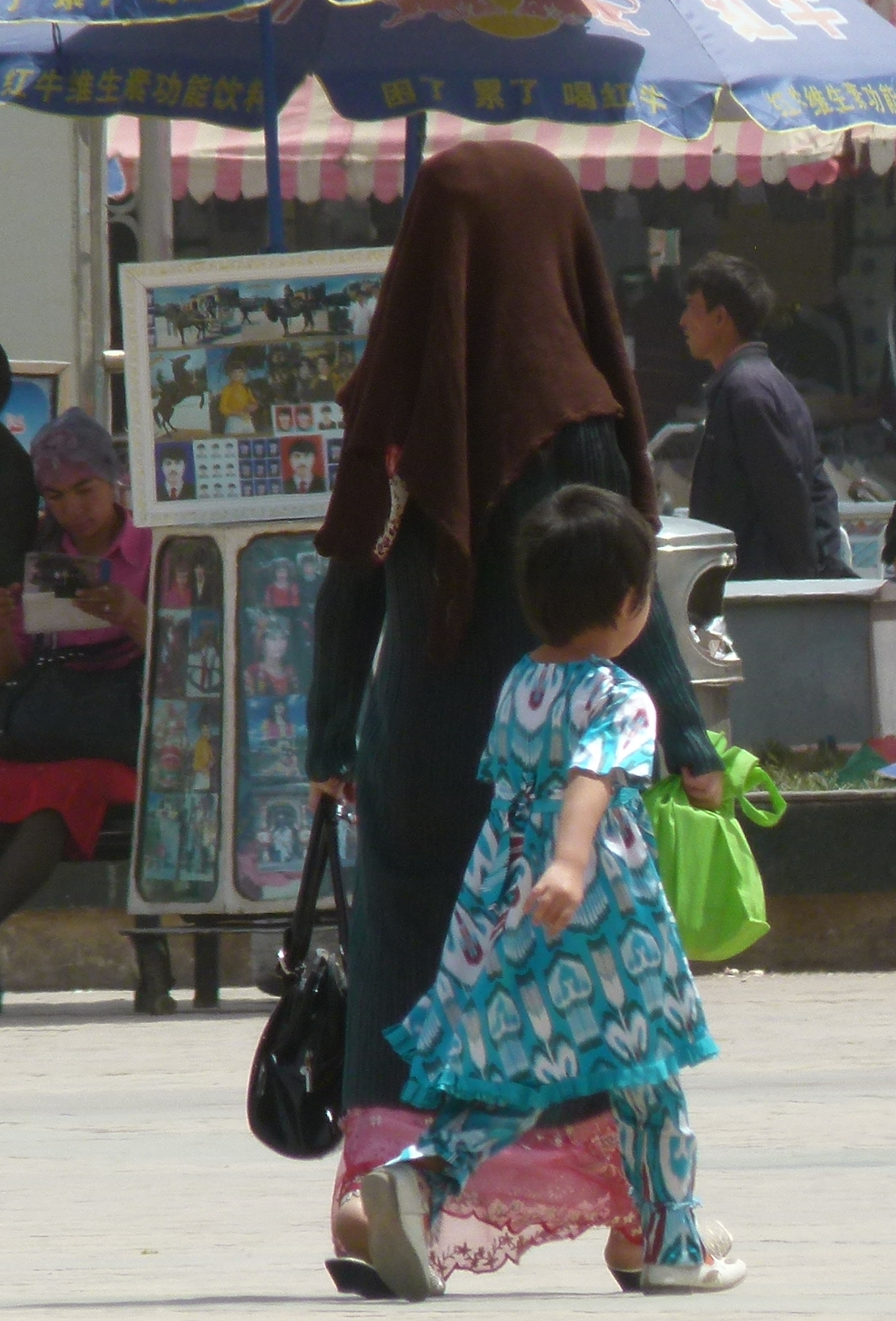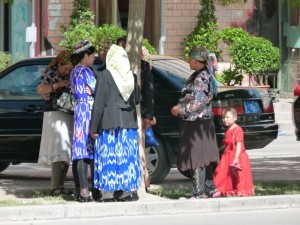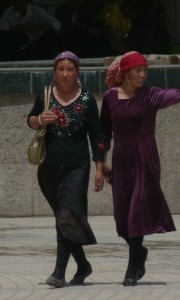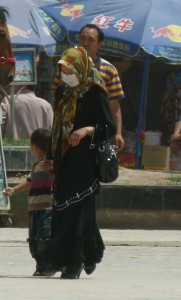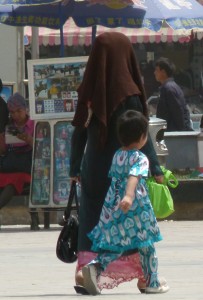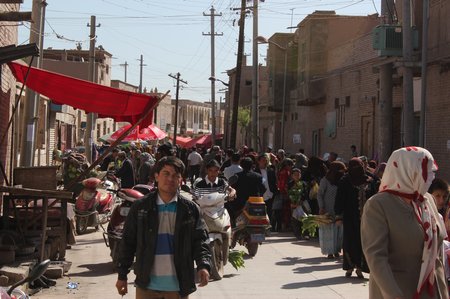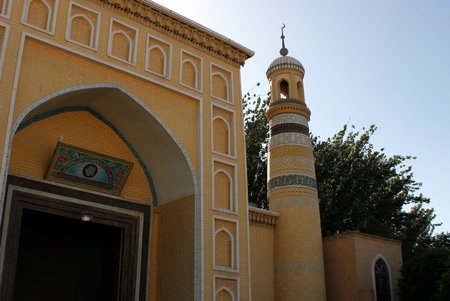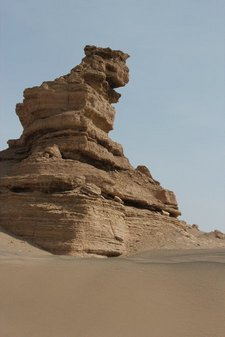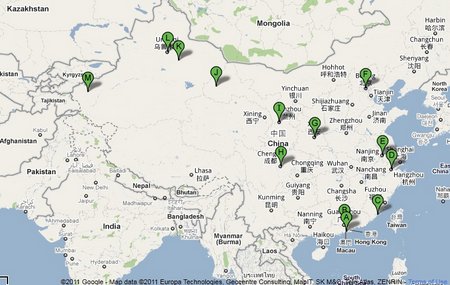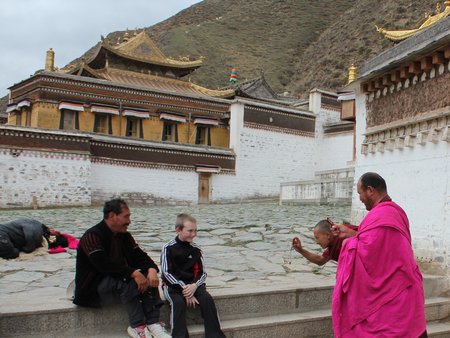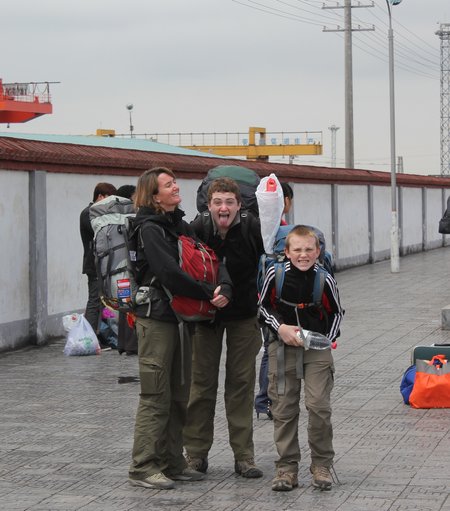In the Upal market a man driving sheep passed by. We followed him out of the market proper towards the livestock area. There were three or four guys in white coats sitting by the entrance. Odd, I thought. The lady taking entrance fees waved us through since it was pretty obvious that we weren’t buying or selling livestock. Small dusty animals were tied up along a wall or under the few spares trees for shade. The calves were on our right, sheep and goats on our left in two aisles. Most of the lots were small – no more than four or five animals – with the odd person leading a single sheep or goat.
I think I was the only woman in the animal market, not that anyone noticed. The men, in a uniform of dark pants, dark suit jackets and flat peaked caps, were busy examining animals.
“Mart and Market”, said Murph. I nodded.
BigB, ever the little pitcher wanted to know what we were talking about. We explained that when we were his age Ireland was still a mostly agricultural economy and that we’d been used to hearing about small livestock fairs like this on a TV show called “Mart and Market”.
You could tell that these stories about us growing up anywhere close to small farmer livestock sales did not at all jibe with his mental image of his high-tech, computer-loving parents.
We stopped in front of a line of sheep, neatly in a row facing the entrance, bottoms towards us. We must have looked a little foolish staring at the sheep. It’s a good job that the chances that anyone could understand our conversation were slim because our discussion was even more ridiculous. We were confused about the gender of the sheep in front of us – the protruding bumps on their behinds appearing most odd and sexually out of place. But the rear end of a sheep doesn’t warrant that much attention so we moved on, back out of the market.
The men in white coats caught my eye again and suddenly I wondered if they were butchers. We’d seen chickens killed in restaurants in other parts of China. It wasn’t a huge leap to imagine a housewife or restauranteur buying an animal at market and having it immediately slaughtered. Maybe by the end of the day those white coats wouldn’t be so white.
Once back in the car we continued west. Konghur Tagh and Muztagh Alta were visible from base to 7,000m peak against the blue sky. At Lake Karakul we stopped and looked down from the road at this small lake with such immense mountainous guardians. We were immediately approached by locals selling rocks, jewellry, Kyrgyz felted hats and rides around the lake – by horse or camel. One young man – he can’t have been more than 20 – was particularly insistent but in a friendly way as if he couldn’t decide which he wanted more: to practise his English or to sell us a pony-trek. Murph took his name and promised to look out for him the next day when we’d been returning and planned to stop and explore the lakeside.
It took two more hours to get to Tashkorgan. Once a bustling town catering to weekly hoards of backpackers and locals traveling along the KKH between China and Pakistan, the town is now a pretty bleak place. The small local population is mostly Tajik. There is a cluster of near-empty hotels and some sad little shops which, from the signs outside, look like they might stock interesting ethnic crafts but where when you look in, you find only cheap, mass-produced clothing or basic groceries. Abdul Wahab had told us that in 2000, he’d been working as a tour guide based out of Tashkorgan.
“We were really making money”, he said, quoting annual revenue figures in the hundreds of thousands.
“And then, in late 2001, the tourists disappeared. The tour companies closed, one of the most popular hotels was practically abandoned by the owners and everyone left.”
The impact of a War on Terror half a world away and yet just across the border.
Out of nowhere, the wind had whipped into a demonic frenzy. Trees were bent almost to touch the streets. A roof-sized portion of metal sheeting blew past the window as we ate dinner. Dark clouds hid all the mountains and even most of the valley from view. We decided to wait until the morning to visit the stone fort after which Tashkorgan is named.
Like what you’ve read and interested in reading more? Subscribe to the WanderMom rss feed, follow me on Twitter or become a fan on Facebook.
Related Posts
[catlist tags=China]
Share and Enjoy
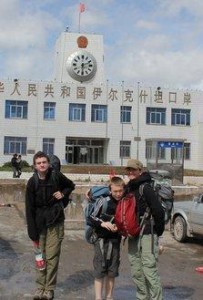 As we left Kashgar for Osh in Kyrgyzstan I expected a long but fairly uneventful travel day. The reality didn’t deviate too much from my expectations but even with that the experience couldn’t have been further from mundane.
As we left Kashgar for Osh in Kyrgyzstan I expected a long but fairly uneventful travel day. The reality didn’t deviate too much from my expectations but even with that the experience couldn’t have been further from mundane.